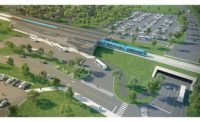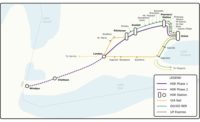 |
| Fukakusa |
Justin Trudeau’s Liberal government is winding down its long-standing public-private-project development agency as it moves to launch Canada’s new infrastructure bank to propel the funding approach and gain big investors.
But some are concerned how the new financing entity will fill the void.
Current plans call for the Canada Infrastructure Bank to launch by year-end, replacing by next year’s first quarter PPP Canada, formed by the Stephen Harper-led conservative government in 2008.
The bank’s goal is to more efficiently leverage and manage federal infrastructure funds in partnership with the private sector. But much of how the new Crown corporation, which will have $27.4 billion in seed money, will proceed has yet to be fleshed out, says John Gamble, CEO of the Association of Consulting Engineering Companies-Canada.
In a Nov. 3 blog post, Andrée Blais, a partner at law firm Nossaman LLP, notes the bank’s focus on revenue-generating projects. “This is an interesting variance from PPP Canada; most P3s in Canada to date have been availability payment deals for infrastructure with no or limited revenue generating potential relative to project capital cost,” she writes. “It’s not clear to what extent the [bank] will provide federal support to non-revenue generating deals.”
Blais also notes the bank’s mission to attract institutional investors such as pension funds, some of which often have opted to invest outside the country. “This was not a particular objective of PPP Canada,” she says.
At a major P3 conference in Toronto on Nov. 7, bank Chairwoman Janice Fukakusa, who was named in July from a former role as chief financial officer at the Royal Bank of Canada, told attendees that the infrastructure bank now seeks a CEO and board members. Both need to be in place for the bank, set to have about 100 employees, to fully open, says a spokesman for the federal infrastructure ministry.
Fukakusa also told attendees that bank-financed projects would be in the public interest and that the entity would structure project deals to make them more appealing to investors.
The bank also announced its inaugural board of directors on Nov. 16, but one media report contends that some of the 10 financial executives named are controversial choices.
The infrastructure bank “has much more flexibility” in financing options, says Blais, but cautions that it “will need to be alert to potential conflicts created by these options” with traditional private-sector parties.
Fukakusa told conferees that the bank will complement existing P3 models. According to a media report, however, one attendee noted the bank’s need for vigilant due diligence related to forecasts of infrastructure use and revenue.



Post a comment to this article
Report Abusive Comment